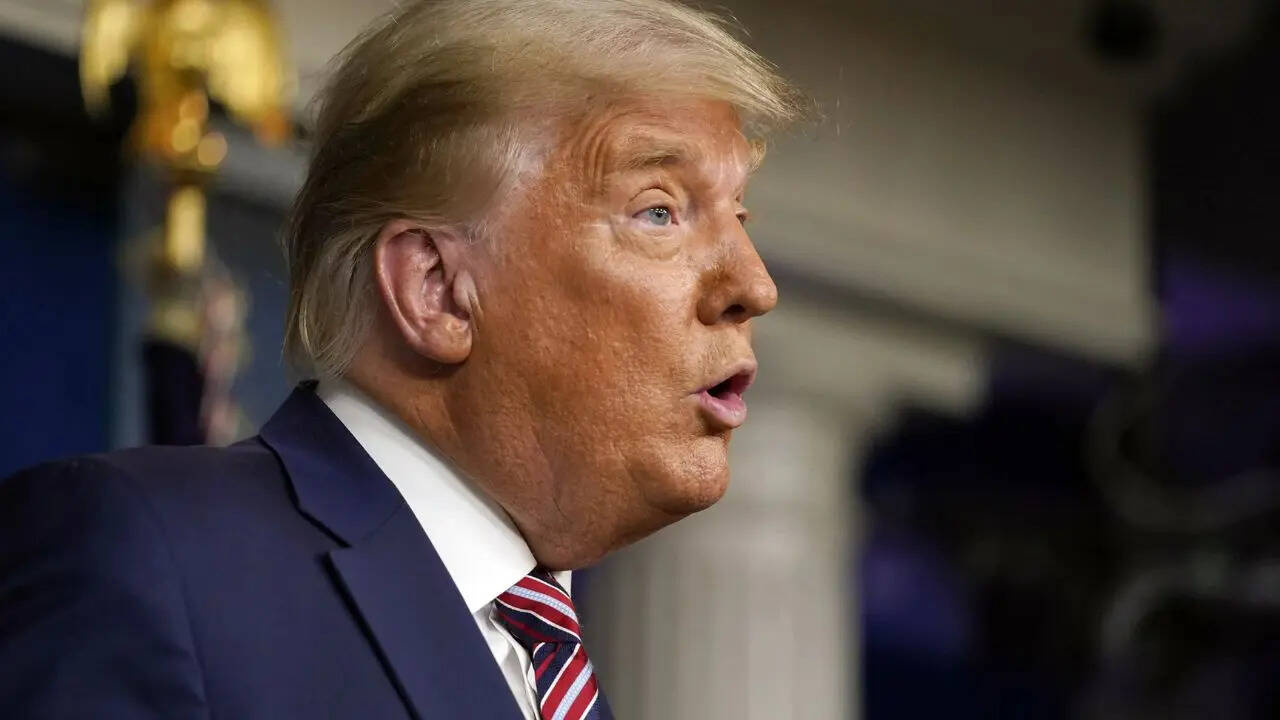
According to officials, the EU’s framework deal with the US caps pharma tariffs at 15, regardless of Trump’s new 100 directive.
Photo : AP
US President Donald Trump’s latest tariff salvo is aimed squarely at the global pharmaceutical industry. On Thursday, Trump declared that the United States would impose a 100% tariff on all imported branded and patented medicines unless the manufacturer is building production facilities in America. But in a late clarification, the White House confirmed that longstanding trade pacts with the European Union and Japan will shield them from the harshest duties, while the United Kingdom faces the full brunt of the policy shift, said a Bloomberg report.
The move is being read as part of Trump’s broader strategy to pressure global pharmaceutical giants into onshoring production, while simultaneously rewarding trading partners with whom Washington has negotiated favorable frameworks.
According to officials, the EU’s framework deal with the US caps pharma tariffs at 15%, regardless of Trump’s new 100% directive. Japan enjoys similar treatment under the US-Japan economic pact, which states that tariffs on Japanese pharmaceuticals and semiconductors must not exceed those applied to other major partners like the EU.
The UK, however, is in a precarious position. Despite concluding a trade agreement with Washington that contained provisions for pharmaceutical tariff exemptions, London and Washington have not agreed on a specific tariff rate. As a result, the White House says UK-based drugmakers will face the full 100% levy, making them the biggest losers in this new trade equation.
Trump’s “Build in America” push
Announcing the measure on social media, Trump said the United States would impose a 100% tariff on any branded or patented drug “unless a company IS BUILDING their Pharmaceutical Manufacturing Plant in America.” He defined this as “breaking ground and/or under construction.”
If a company can demonstrate that it is in the process of setting up a facility in the US, its products would be exempt while the Commerce Department vets and approves the plan.
The underlying message is clear: manufacture in America or pay the price. Trump has long criticized US reliance on overseas medicine supplies, particularly after the COVID-19 pandemic exposed vulnerabilities in global supply chains. This tariff initiative dovetails with his promises to reindustrialize critical sectors and protect American jobs.
Impact on the UK
For Britain, the timing could not be worse. Its pharmaceutical industry, led by giants such as GlaxoSmithKline and AstraZeneca, is heavily reliant on exports to the US — one of the world’s largest drug markets. Facing a 100% tariff effectively doubles the cost of their products in the US, threatening competitiveness and profitability.
Trade analysts warn that unless London urgently negotiates tariff relief, UK drugmakers could lose ground to EU and Japanese rivals, who will continue to enjoy capped or preferential rates. This may also force some companies to accelerate investments in American manufacturing facilities to bypass the duty.
Relief in Europe and Japan
The news brought relief to European and Japanese capitals, where governments had scrambled for clarity after Trump’s sudden announcement. EU officials pointed to the bloc’s earlier framework deal with Washington, which secured limits on US tariffs for key industries, including pharmaceuticals.
Japan, too, leaned on its trade pact to secure parity with the EU, avoiding the steep tariffs that could have destabilized its pharma exports.
Part of a wider trade agenda
This is not the first time Trump has used tariffs to pursue strategic goals. Earlier this week, his administration cut US tariffs on European auto imports to 15% from 25%, in line with commitments under the EU trade understanding. The pharmaceutical tariffs appear to follow a similar template: use aggressive announcements to gain leverage, then carve out exceptions for allies willing to negotiate.
Analysts note that the policy serves both economic and political objectives. On the economic side, it incentivizes drugmakers to build plants in the US, boosting domestic jobs and reducing supply chain risks. On the political side, it plays well with Trump’s base, showcasing him as tough on foreign corporations and protective of American workers.
Industry and investor reaction
The pharmaceutical industry, already grappling with regulatory pressure and pricing scrutiny in the US, reacted with caution. Multinationals with operations spread across Europe, Japan, and the UK are now re-evaluating supply chains, weighing whether accelerating US manufacturing projects is the only way to protect market access.
Investors are watching closely. Shares of US-based pharma companies gained slightly on expectations that domestic production could rise, while UK pharma stocks dipped amid fears of losing the lucrative US market.
What happens next?
The immediate challenge lies with the UK government, which must either push for a negotiated tariff cap or support domestic drugmakers in investing directly in US facilities. EU and Japanese companies, meanwhile, appear to have escaped the worst — at least for now.
But experts caution that Trump’s tariff announcements often evolve, and allies cannot assume permanent immunity. As one trade strategist put it: “Exemptions today don’t guarantee exemptions tomorrow. Washington is keeping the leverage firmly in its hands.”
